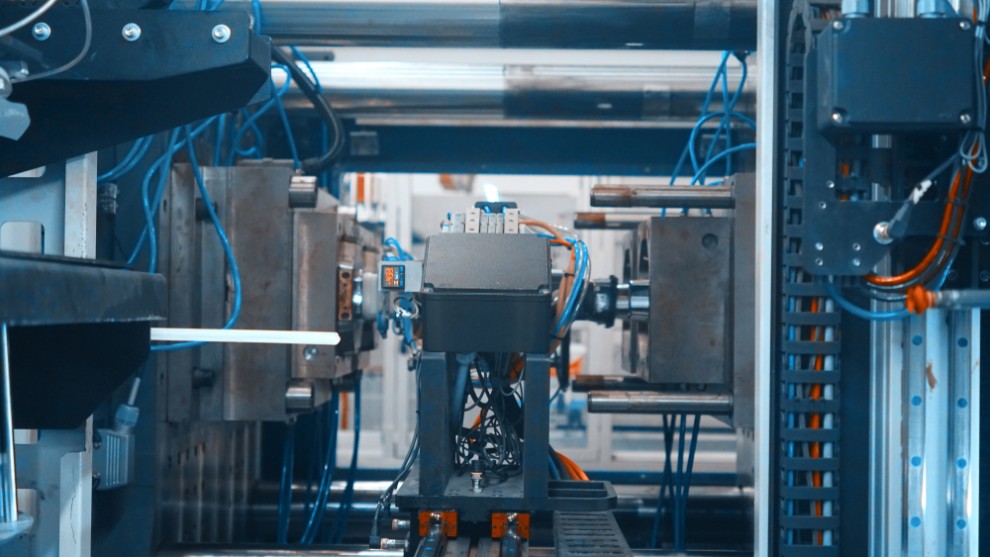Injection molding is a broadly implemented manufacturing process used to produce plastic-based products in large volumes. Although the process was concocted as right on time as the nineteenth century, it remains an ideal approach to create complex, identical parts on a mass level while monitoring costs. The injection molding machine utilizes uniquely crafted molds to fill them out as per specifications, making indistinguishable duplicates modified in various ways. The molten raw material is injected into the mold through the nozzle and processed under specified pressure and temperature unless the molten material adopts the required shape.
The temperature and pressure values are pre-calculated considering the geometry, shape, and nature of raw materials. As far as raw material is concerned, elastomers, glass, and confections get used. Nevertheless, thermosetting as well as thermoplastic polymers are the most prevalent in the list of raw materials. Advanced injection molding methods like repeated injection can be utilized to make parts via different materials if required. Likewise, it is conceivable to use overmolding or insert molding to add plastic-made parts over existing ones made from other materials.
What Runners Are
In injection molding, the molten plastic flows into the runner after passing through the sprue. In an injection molding machine, the runner is a channel that directly leads into the gate to the part. In case the injection mold has one cavity, there will only be one branch to the runner. Furthermore, if there are multiple cavities in the mold, there will be various branches to the runner to ensure the required flow of molten material throughout the process. That is how each cavity of the mold gets a proper amount of flow. When designing the runner, a cold slug gets added when there is a complex transition between branches.
The reason behind the addition of a cold slug is that the molten material flows through the runner, and it might begin to cool. Thus, the cold slug is assumed as an area where the cold plastic gets dumped to prevent it from entering the gate. Apart from this, the runner impacts part formation, including mold filling pressure, melt temperature, packing, shrinkage, residual stresses, warp, etc. Runners can be in many shapes, such as round, parabolic, and trapezoid. There exist two fundamental types of runner systems: hot runners and cold runners.
When Are Hot Runners Used?
Here are the scenarios when a hot runner can get used in the injection molding process:
- Even though hot runners may not be needed for injection molding cycles, they can be helpful to offer a high-quality part, especially with tricky part geometries and calculations requiring a lower margin of errors in the molten plastic’s flow properties.
- Additionally, hot runners can help avoid plastic wastage in high volume runs. On the other hand, cold runners are unheated, so the channel should be well-built, and more plastic should be injected during each cycle.
- Remember that the drawback to hot runner technology is expensiveness as a matter of course compared to a cold runner system. That is why hot runner systems are used only for mass production.
Benefits of Hot Runners
Hot runners have many benefits, and some of them are here:
-
Improved Efficiency of System
In comparison to cold runners, hot runners are too convenient to work with since there is no solidification of molten material in the runners after each under-filled shot. Hot runners can work ideally even when the machine is on auto-mode. Similarly, in hot runners, the lower injection pressures can be utilized, and it inflicts a positive impact on the deflection of mold and platen. Subsequently, the cost of injection molding is low, and the efficiency is high.
-
Optimal Quality of Part
The filling and packing conditions are complicated in cold runners; however, it does not happen in hot runners. In cold runners, there is a risk of heat losses to the mold-plates that cause a drastic pressure drop, and the result is in the form of under-filled parts of sink marks. Nonetheless, the hot runner possesses a balanced melt flow at a specific temperature, and heat losses are negligible from the nozzle to the gate. Henceforth, the quality of the final product is much better, and most probably, it is robust against vulnerabilities that are hard to encounter for cold runners.
-
Flexibility in Design
A considerable advantage of the hot runner, often ignored, is its ability to locate gates at different points of the part. While considering the option of optimum filling, using valve gating, edge gating, and hot-tip gating gets brought under the spotlight, and hot runners allow the gates to be placed at the most suitable location. Therefore, with this flexibility in the use of gates, hot runners appear perfect to create flexibility for gate location, which also impacts cooling and mold simplification.
-
Balanced Melt Flow
In hot runners, melt channels are in separate and externally heated manifolds, insulated by the mold plates surrounding them. The hot manifold can have multiple flow channels to ensure that the resins (raw material) will flow the same length in channels from the nozzle to the cavity. In addition, the molten plastic reaches each cavity simultaneously under the same thermal history and same pressure. Consequently, the melt flow remains balanced and straightforward, especially for resins as raw material with narrow processing windows.
Conclusion
Hot runners remain in shear competition with cold runners, but both systems have their benefits and complexities. However, the hot runner system is the best-suited approach to minimize wastage and add in the flexibility of design with optimal quality of the part and enhanced efficiency of the molding system. After having gone through the details mentioned above about the usage and benefits of hot runners, it will be better for readers to decide if hot runners are worthwhile or not. However, the decision whether to use hot or cold runners is highly dependent on the project’s specifics, as indicated before.



